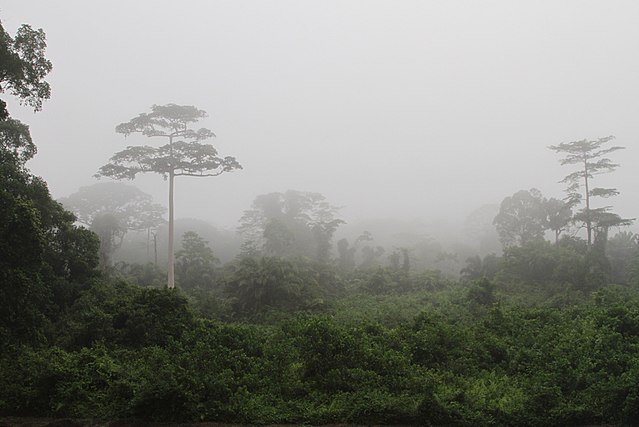
Nestled in the lush landscapes of Ivory Coast, Taï National Park stands as a testament to the country’s rich biodiversity and ecological significance. Spanning over 3,300 square kilometers, this UNESCO World Heritage Site is not only one of the last remnants of the West African rainforest but also a vital sanctuary for numerous endemic and endangered species. In this extensive blog post, we will explore the park’s unique ecosystems, its incredible wildlife, conservation efforts, and why it should be on every nature lover’s bucket list.
A Brief History of Taï National Park
Taï National Park was established in 1972, primarily to protect its unique rainforest ecosystem. The park has a long history, with archaeological evidence suggesting that it has been inhabited for thousands of years. The area was initially part of the larger Taï Forest, which was once interconnected with other forests across West Africa.
In 1982, the park was designated a UNESCO World Heritage Site due to its exceptional biodiversity. This recognition helped raise awareness about the need for conservation efforts in the region, which faced threats from logging, agriculture, and poaching.
Geography and Climate
Location and Terrain
Taï National Park is located in the southwest of Ivory Coast, near the town of San Pedro. The terrain is characterized by rugged hills, steep slopes, and a variety of soil types that contribute to its rich biodiversity. The park is covered primarily by dense tropical rainforest, with some areas featuring savanna and swamp ecosystems.
Climate
The climate in Taï National Park is tropical, with a significant amount of rainfall throughout the year. The wet season typically spans from May to October, while the dry season lasts from November to April. This climatic variability supports a diverse range of flora and fauna, making the park a vital area for ecological studies.
Biodiversity Hotspot
Flora
Taï National Park is home to over 1,000 species of plants, many of which are endemic to the region. The park’s vegetation is predominantly composed of dense rainforest, with towering trees that can reach heights of up to 60 meters. Some notable plant species include:
- Mahogany (Swietenia macrophylla): Known for its durable and valuable wood.
- Ebony (Diospyros spp.): Prized for its dark, dense wood, used in furniture making.
- Rattan Palms (Calamus spp.): Important for local crafts and traditional uses.
The diverse plant life supports a myriad of ecosystems, from the forest floor to the canopy.
Fauna
Taï National Park is recognized as a biodiversity hotspot, harboring numerous species of mammals, birds, reptiles, and amphibians. Here are some highlights of the park’s wildlife:
Mammals
Western Chimpanzee (Pan troglodytes verus): Taï is one of the last strongholds for this endangered subspecies of chimpanzee. They inhabit the forest canopy and are known for their complex social structures and tool use.
Forest Elephants (Loxodonta cyclotis): These smaller relatives of the African savanna elephant play a crucial role in maintaining the ecological balance of the forest. They help in seed dispersal and creating clearings in the dense vegetation.
Jungle Cats (Felis chaus): Adapted to the park’s environment, these elusive felines can often be spotted near water bodies.
Giant Forest Hog (Hylochoerus meinertzhageni): A large, social pig species that roams in groups and is often seen foraging for food in the underbrush.
Birds
Taï National Park is a birdwatcher’s paradise, boasting over 250 species of birds, including:
- Great Blue Turaco (Tauraco venustus): A stunning bird known for its vibrant plumage and striking appearance.
- African Grey Parrot (Psittacus erithacus): Highly intelligent and social, these parrots are a threatened species due to habitat loss and illegal pet trade.
Reptiles and Amphibians
The park is also home to a variety of reptiles and amphibians, including several endemic species of frogs and snakes. The high humidity and diverse habitats create an ideal environment for these creatures.
Cultural Significance
Indigenous Communities
The area surrounding Taï National Park has been home to several indigenous communities for centuries. The locals, including the Akan and Krou people, have deep cultural ties to the forest, relying on its resources for their livelihoods. Their traditional knowledge of the ecosystem is invaluable for conservation efforts, as they have developed sustainable practices that help preserve the environment.
Conservation Efforts
In recent years, there has been an increased focus on conservation in Taï National Park. Organizations like the World Wildlife Fund (WWF) and local NGOs have partnered with the Ivorian government to implement various conservation strategies, including:
Anti-Poaching Initiatives: Training park rangers and implementing strict regulations to combat illegal hunting.
Community Engagement: Involving local communities in conservation efforts by promoting sustainable practices and eco-tourism.
Research and Monitoring: Conducting ecological studies to monitor wildlife populations and assess the health of the ecosystem.
Eco-Tourism in Taï National Park
Taï National Park offers a unique opportunity for eco-tourism, attracting nature lovers, researchers, and adventurers alike. The park provides various activities for visitors, including:
Guided Tours
Experienced local guides lead eco-tours through the park, offering insights into the rich biodiversity and cultural significance of the area. These tours can be tailored to focus on specific interests, such as birdwatching or primate observation.
Birdwatching
With over 250 species of birds, Taï National Park is a haven for birdwatchers. Many bird species can be spotted in the early morning hours, making it an ideal time for enthusiasts to explore.
Wildlife Photography
The diverse wildlife and stunning landscapes make Taï an excellent destination for wildlife photography. Visitors can capture breathtaking images of the park’s flora and fauna, including the elusive chimpanzees and colorful birds.
Hiking and Nature Walks
The park features numerous trails that allow visitors to immerse themselves in the natural beauty of the rainforest. Hiking through the dense vegetation offers a unique perspective on the park’s ecosystems and the opportunity to encounter various species in their natural habitat.
Challenges Facing Taï National Park
Despite its ecological significance and conservation efforts, Taï National Park faces several challenges:
Deforestation
Illegal logging and agricultural expansion pose significant threats to the park’s biodiversity. The demand for timber and arable land has led to encroachments into protected areas, fragmenting habitats and threatening wildlife.
Climate Change
Climate change poses a long-term threat to the ecosystems within Taï National Park. Rising temperatures and changing rainfall patterns can disrupt the delicate balance of the rainforest, affecting plant and animal species that rely on specific conditions.
Poaching
Despite increased efforts to combat poaching, illegal hunting remains a significant issue in the park. Many species, including chimpanzees and elephants, are targeted for their meat or body parts, further endangering their populations.
Conclusion
Taï National Park is not only a vital ecological sanctuary but also a cultural treasure that showcases the rich biodiversity of Ivory Coast. Its unique ecosystems and diverse wildlife make it a critical area for conservation and research. As awareness grows about the importance of preserving such natural wonders, it becomes imperative for both local communities and international organizations to work together in protecting Taï National Park for future generations.
For nature enthusiasts, researchers, and adventurers, Taï National Park offers an unparalleled experience to connect with the beauty of the natural world. Whether you are trekking through its lush forests, observing the remarkable wildlife, or learning about the indigenous cultures that call this area home, a visit to Taï National Park is sure to leave a lasting impression.
As we continue to explore and appreciate the wonders of our planet, Taï National Park stands as a poignant reminder of the delicate balance between nature and human activity. It is a call to action for all of us to protect and cherish the incredible biodiversity that surrounds us.
